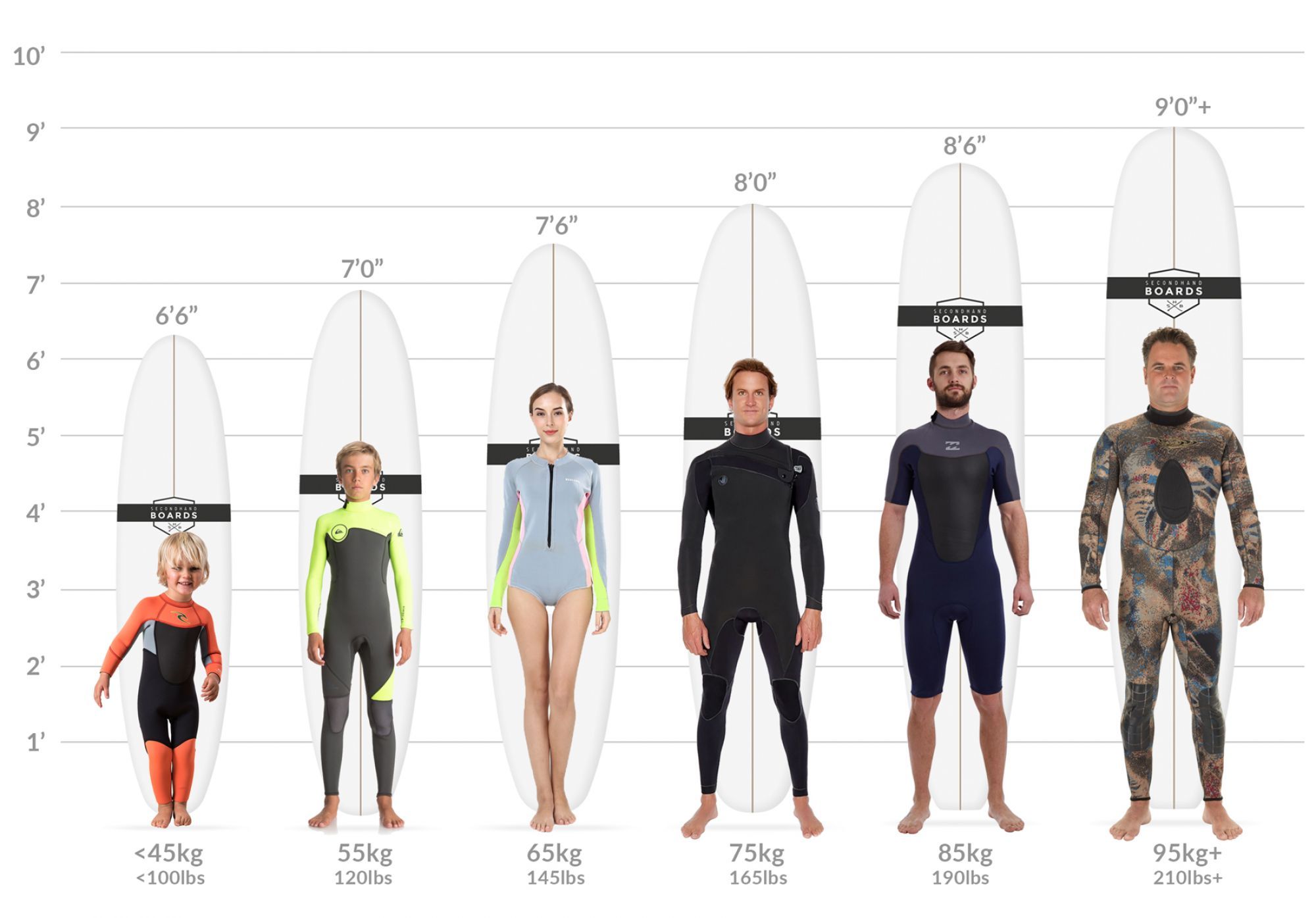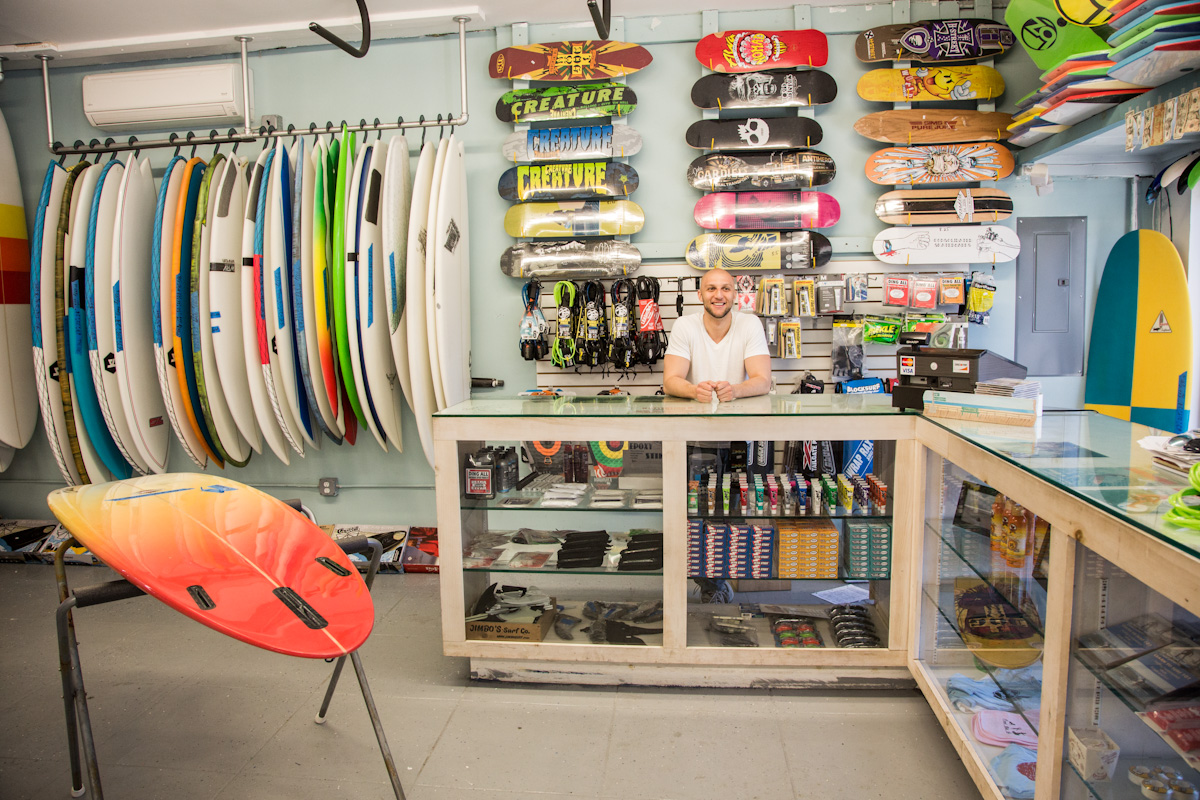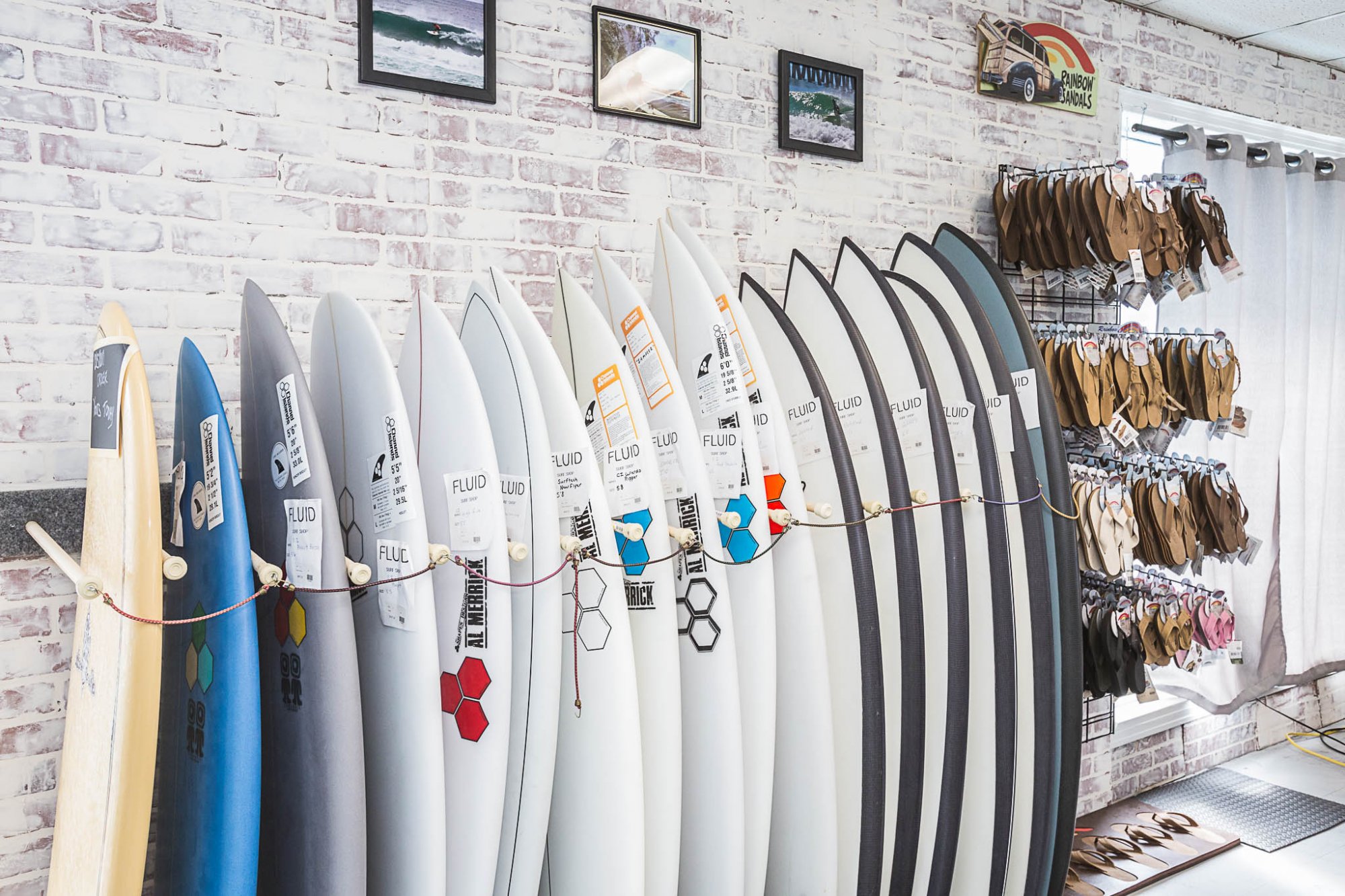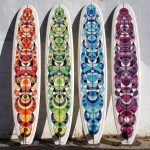When you stand at a surf shop in front of dozens of newly made surfboards, you have a reasonable question: what surfboard to choose? What size will fit you and your abilities best?
At that very moment, it’s important to mind your previous experience of surfing, and also your height and weight to choose correctly.
Surfers are trying to choose the surfboard that will meet their requirements: one surfer wants to increase the hours to spend on the water, the other surfer wants to improve riding skills.
The right size board will help a surfer to achieve these goals and to make progress.
That is why it is so important for surfers to choose deliberately and reasonably.

The surfer Sam Brown is sharing his experience of visiting the local surf shop to choose a board for himself.
According to his words, the information he got at the store perplexed him even more than he had felt when coming there as a surfer to choose a new board.
And still, he had no answer whether it was better to choose EPS foam, what resin he should choose for qualitative surfing, how wide and thick the surfboard should be, or why the shorter board is better.
It’s important to note that some designs were created to be even smaller than a shortboard, so it is rather difficult to choose the best variant for surfers.
One more question of our surfer is about volume and whether it’s true that this indicator is the main influencer on what surfboard size is good for a surfer.
We are sure that these doubts are common for those surfers who want to decide what surfboard to choose.

Sam Brown considers that one of the best ways for surfboard shapers to help surfers choose correctly is to indicate the information about the volume, he was so interested in, just on a surfboard.
The information will be able to guide the surfers and explain who the surfboard was made for much better than indicators in other units of measurement.
By the way, Sam Brown’s weight is 165 lb (75 kg), his experience counts six years of riding the high swells as a surfer, and at that time he wanted a maneuverable and responsive surfboard to be controlled easily, no matter what size to choose.
This fault-finding may seem strange but you must not forget about the board prices. The surfer should choose reasonably and it’s the only option when the price is measured by better riding.
The surfer confesses that the emotional purchase might then cost a lot when on the water you realize that you’ve made a wrong choice and meanwhile spent about $1000.
Nowadays manufacturers of surfboards make all the measurements in inches and feet but as we have seen it may be easier for surfers to figure out the volume in cubic units to choose the best variant.

However, the opinion of the engineer Lisa Dang is different. She considers that the indicator of volume doesn’t influence or add to flotation.
According to her words, the heavy object with any volume will not have the flotation ability and go to the ocean’s floor in any case.
On the other side, the measures of density or thickness are important to choose among different types and designs for a surfer.
As we know, the lightest material is EPS or expanded polystyrene, that’s why the density is small and the buoyancy is good. The opposite, the PU material or Polyurethane is heavier, and its density is larger.
EPS foam, in its turn, has some other components that are added to make it firmer and stronger meaning fiberglass or epoxy resin that are usual coats for surfboards. These substances can change the density but not dramatically.
Some new types of surfboards do have a lighter construction and they are empty inside with only the hardcover.
As the Engineer Lisa Dang said, the volume may be important when it adds to the surfboard area of the surface in the case when, for instance, we want to choose and compare two surfboards with similar density.
Thus, after the density and flotation ability, the surface area is the component that is important to keep in mind when choosing the surfboard.
Thus, in the expert’s opinion, after the density, surfers should pay attention to the surface area.
And to calculate it, you need the measures indicated by manufacturers in feet and inches. If you know how long the surfboard is and how wide it is, you can imagine its overall surface and choose correctly.

Let’s look closer at what the surface area may affect. First of all, it can provide you with stability.
So, less area you can stand on means less stable ride. And the opposite, the bigger surface area may give you good buoyancy.
Mind that the bigger body mass needs more surface. And surfers who are not tall and heavy may easily choose and ride smaller surfboards.
At the same time, as a surfer, you need to estimate and choose correctly when your riding might be stable but it loses maneuverability. To gain maneuverability, the other surfboard characteristics are reasonable for a surfer to choose from.
The following tips are aimed to help surfers to choose and start riding smaller surfboards.
- Tolerate less flotation. Smaller and shorter surfboards are made from foam with a lower density than the board you got used to.
- Mind the area you can stand on. Only a few inches from any side may shorten the whole length of the surfboard.
- To save buoyancy, pay attention to how thick your future surfboard will be to choose correctly. The thickness may influence flotation ability.
The accurate measurement of density is a hard deal a surfer faces in a surf store that lets him choose correctly. To determine it, the surfer needs to know more than just the weight, width and the height of the surfboard.
The surfer needs to know that the foam is a material that may have various characteristics to choose from including the level of compression.
Moreover, the material the surfboard is made from is usually heterogeneous with adding many kinds of substances.
In these cases, it’s even more difficult for the surfer to know the density because he is forced to plus all the densities of the foam and other substances in correct proportions that were used to make the surfboard.
Therefore, it’s better to explore the characteristics of all the foams and choose correctly according to them.




